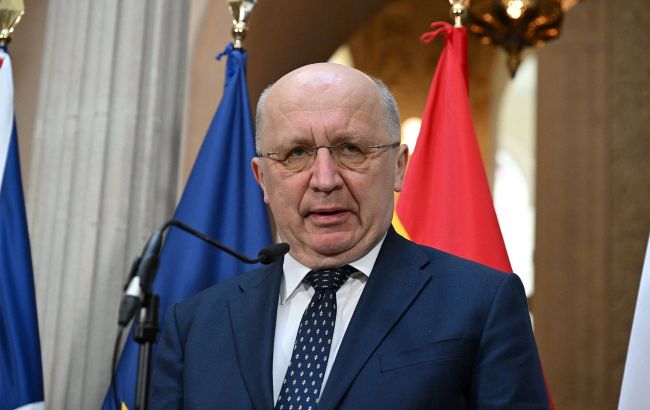Russia testing limits? EU wants to boost eastern‑flank countries with strike drones
 Photo: Andrius Kubilius, European Commissioner for Defense (Getty Images)
Photo: Andrius Kubilius, European Commissioner for Defense (Getty Images)
The European Commission insists that strike drones be deployed in countries bordering Russia. They will be needed in case of a Russian military attack, according to remarks in the European Parliament by European Commissioner for Defense Andrius Kubilius.
All of Europe is under threat
Kubilius noted that Russia’s provocations against European Union countries pose a danger to people and peace in Europe. Therefore, the bloc needs to act "very practically and effectively."
He pointed out that drones represent the future of warfare and provocations, and the EU is currently poorly prepared for this. In particular, the defense systems of member states are practically unable to detect drones or track border crossings. Shooting down a €10,000 drone with a €1 million missile is not "sustainable."
The European Commissioner stressed that all of Europe is under threat, as Russian Shahed drones have a range of 2,500 kilometers. They could even reach Brussels or Strasbourg. From container ships, drones are capable of striking targets along the entire European coastline.
How the EU should respond
According to Kubilius, in the short term, it is necessary to develop capabilities for better detection, tracking and identification of drones using acoustic sensors, radars and satellites.
In the long term, capabilities to neutralize or destroy drones should be developed using interceptors, electronic warfare and mobile units.
"For the eastern flank countries, there is a need for capabilities to use the drones to hit the targets on the ground if an enemy will try to invade the country. tailored approach. That is what is needed. Frontline states have different needs compared to other countries, including countries in the Mediterranean," the commissioner noted.
He added that countering Russian drones is impossible without cooperation with Ukraine, whose air defenses shoot down 70–80% of targets.
"Ukrainian drones chased the Russian fleet out of the Black Sea, brought the Russian advance to a standstill and devastated the Russian strategic bomber fleet and oil refineries. In the development of the Drone Wall, special attention should be paid to Ukrainian experience," Kubilius said.
Russian provocations
In September, Russian strike drones violated the airspace of NATO member countries several times.
In particular, on the night of September 10, nearly 20 drones entered Polish airspace. It was later determined that most of the drones were flying from Belarusian territory.
Only a few drones were shot down by air defense forces. The rest likely fell because they ran out of fuel.

